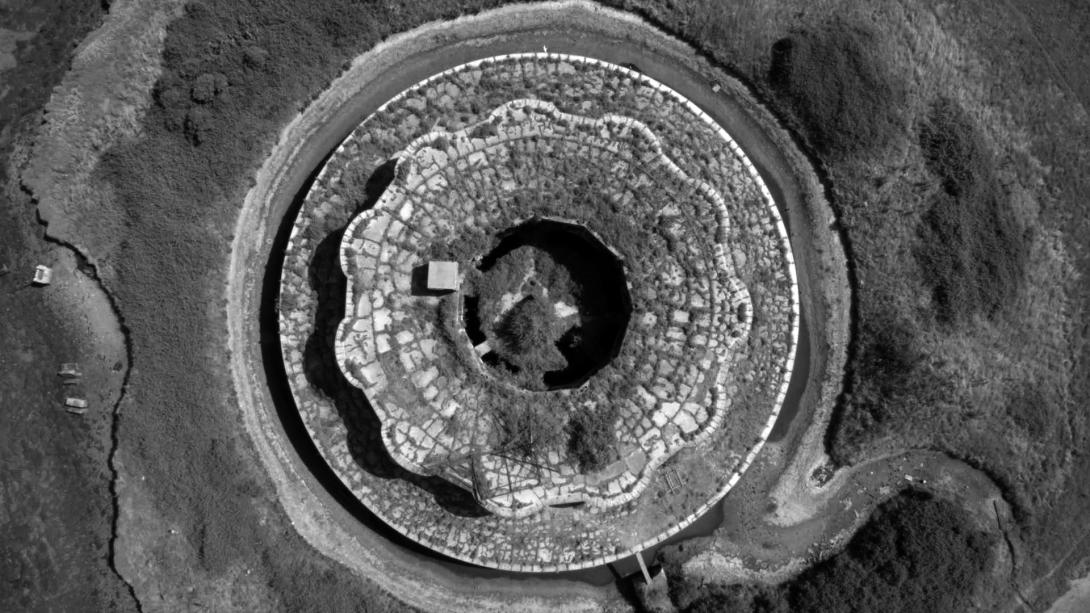Jananne Al-Ani
APT9
Born 1966 Kirkuk, Iraq
Lives and works in London, United Kingdom
In works that balance beauty and unease, Jananne Al-Ani reflects on the flows of capital, power and resources that link different sites and communities, both throughout history and in the present day. In a group of videos created since 2009, Al-Ani splices together aerial footage, emphasising shared shapes and forms in the landscapes surveyed. These works developed from her interest in the early reconnaissance photography of the First World War. Al-Ani asks us to consider the gap between a distant, technology-driven view of the landscape and the messy human impact of war. This became acutely apparent to her in the media coverage of missile strikes on Iraq, her country of birth, in the Gulf War of 1991. The terrain Al-Ani focuses on varies from the highly contested landscape of the Middle East to key military, industrial and agricultural sites in the United Kingdom. The unsettling viewpoint of the camera induces a sense of vertigo, lifting us above the landscape, ever further away from the ground and our own embodied experience.

Jananne Al-Ani / Iraq/UK b.1966 / Black Powder Peninsula (still) 2016 / Single-channel digital video, 4:28 minutes / Image courtesy and © Jananne Al-Ani
Jananne Al-Ani employs the aerial perspective and bleached, sepia-tones of World War One reconnaissance photography to reveal the imprint of conflict and occupation on the landscape. Her earlier films conveyed a sense of falling to earth, recalling, in eerie slow motion, the perspective of a missile nearing its target. In Black Powder Peninsula 2016, our viewpoint rises above the landscape, lifting us ever further away from the ground and our own embodied experience. The artist observes:
One of the most striking effects an aerial view offers is the possibility of flattening and abstracting any standing structures, including the human body. When used in war, the privileged perspective of those in the air can reduce the visibility of the population on the ground.
Al-Ani asks us to consider the gap between a distant, technology-enabled view of the landscape and the messy human impact of war, acutely apparent to her in the 1991 media coverage of Gulf War missile strikes on Iraq, her country of birth.
Black Powder Peninsula is an aerial journey over the United Kingdom, which the artist has called home since 1980. Locations are sites of military, economic or industrial power – the remains of the Curtis’s and Harvey explosives factory at Cliffe, the ghostly footprint of the Anglo–Iranian Oil Company refinery on the Isle of Grain, and the ruins of nineteenth-century Palmerston Forts in the Medway Estuary. Al-Ani builds a humming tension of interconnectivity as these artefacts of the past connect to the vital infrastructure of today: the frothing waste treatment plant, buzzing electrical substations and the repeating geometry of greenhouses and oil tanks. Observing patterns in the flow of power, resources and technology that link us all, Black Powder Peninsula takes its name from gunpowder – introduced into Europe and the Middle East in the thirteenth century from China.
